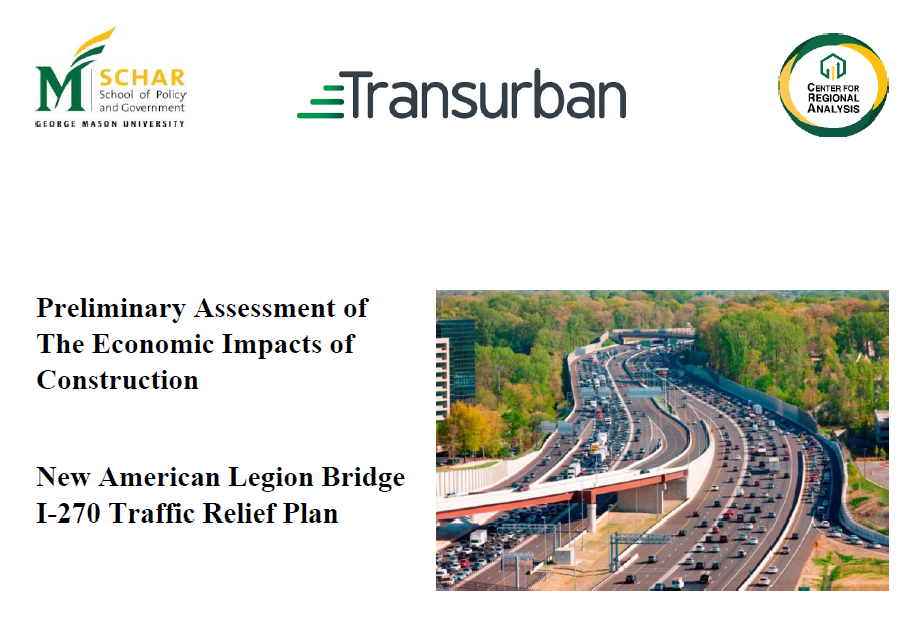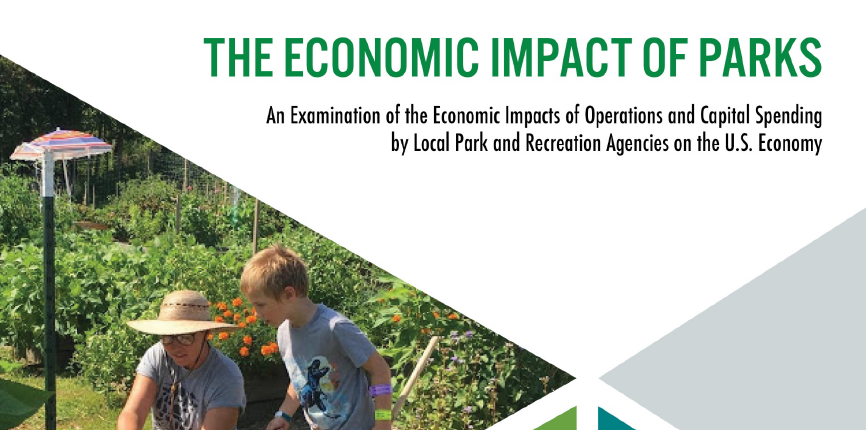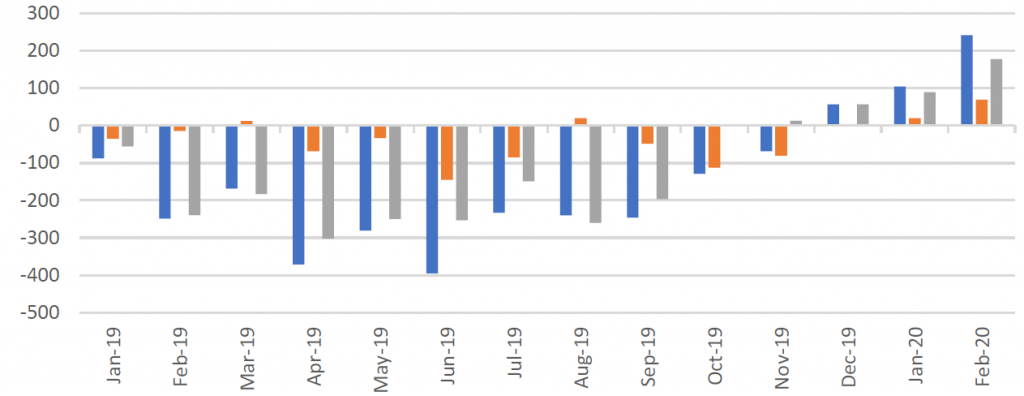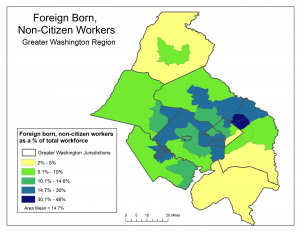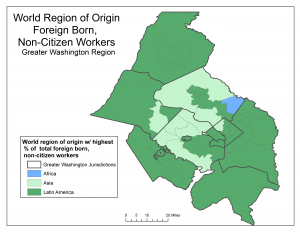The following summarizes the findings of an analysis prepared by the Center for Regional Analysis (CRA) at George Mason University. This preliminary assessment examines the regional economic impacts and tax contributions associated with programmatic spending for the construction of 37 miles of new managed toll lanes along I-495 and I-270 in Maryland, including building a new American Legion Bridge. The analysis is preliminary as the project is still in its Predevelopment phase. Key data assumptions and methodologies are listed below along with our findings.
Category: Latest Updates
This report details the outputs, economic impacts, and outcomes of the work for the National Recreation and Park Association (NRPA).
This research, conducted in direct collaboration with the research staff of the NRPA, examines the role that local parks play in 21st century local economic development, and adds to the growing body of evidence demonstrating that the benefits of parks extend well beyond their role as a public amenity and an enhancement to quality of life in their communities. In this research report, we present our analysis of the economic and fiscal impacts of local park and recreation system spending on state and national economies.
Read the full report here
This report details the outputs, economic impacts, and outcomes of the work of Virginia Housing for the state’s economy and households.
Virginia Housing and the research team hope that the details discussed here encourage more households, communities, organizations, and companies to connect with Virginia Housing and continue the growth, reach, and improvement of Virginia Housing’s services. Although the agency ranks among the top state housing finance agencies in terms of economic impact, similar studies show that there is still room to grow. Furthermore, widespread housing shortages and ever-increasing housing costs make the extensions and growth of Virginia Housing’s activities timely and necessary.
Read the full report here
The Center for Regional Analysis has been watching inventory listings closely in early 2020 given the implementation of a new rule banning off-mls sales, or “pocket sales”. In this report, we examine the early impacts of the new rule.
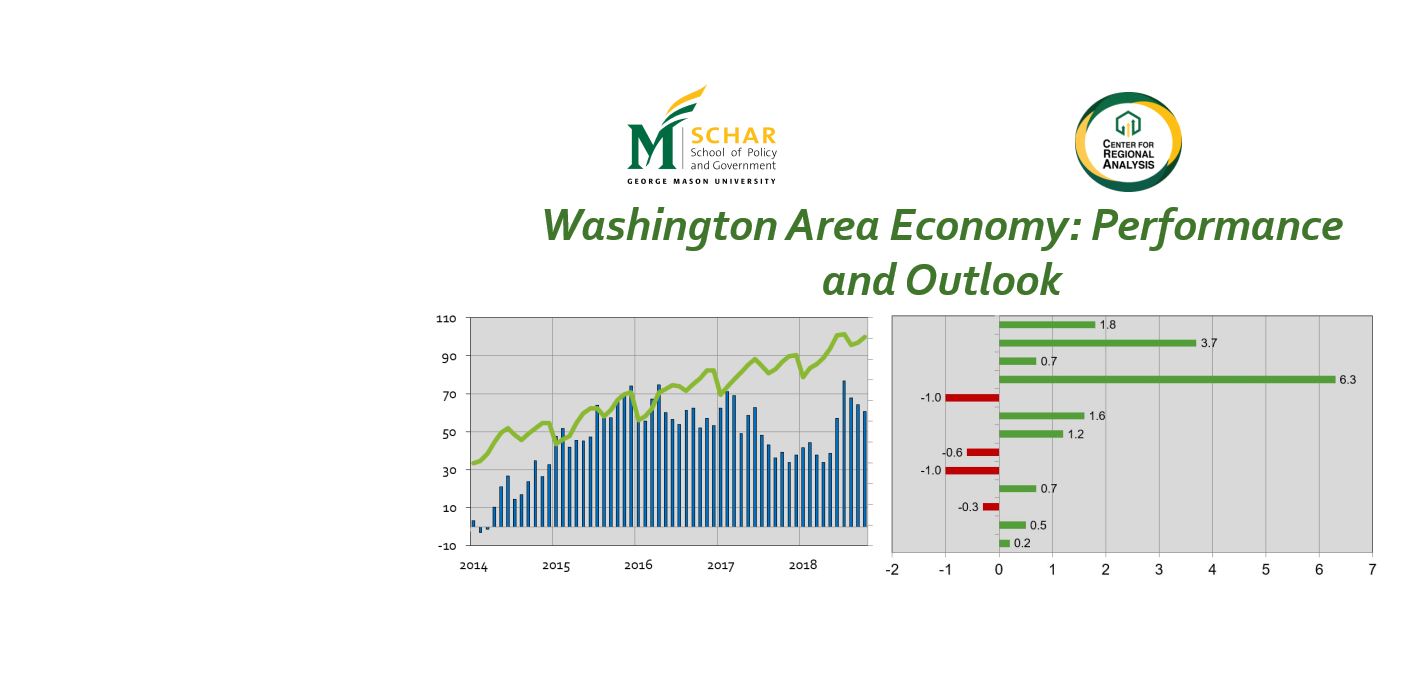
The Center for Regional Analysis routinely updates data that provide a greater understanding of what drives the Greater Washington regional economy.
View the current set of indicator data charts here
CRA produces more than 60 charts and graphs summarizing trends in the national and regional economies and housing markets. Data elements include gross domestic product, jobs, unemployment, consumer confidence, coincident and leading indices, interest rates, sales of existing and new homes, home prices, and regional economic forecasts, among many other categories. CRA develops information concerning both the overall regional economy and focused/select economic and housing data for Northern Virginia, Suburban Maryland, and the District. This set of charts is updated when new data are released.

It is with great sadness that the Center for Regional Analysis shares news of the untimely passing of our center’s founding director, Dr. Roger R. Stough.
Celebrated as one of George Mason University’s original founders of The Institute of Public Policy (TIPP), Dr. Stough sought out and won grants and contracts totaling more than $50 million from agencies ranging from NASA and the National Science Foundation to the Department of Justice and the Federal Transit Administration. The aforementioned grants and contracts, along with Dr. Stough’s determination and hard work, proved key to creating what ultimately would become George Mason University’s Schar School for Policy and Government, as well as launching many graduate degree programs and establishing influential research centers, including our own Center for Regional Analysis.
The Schar School’s obituary to Dr. Stough’s exceptional professional life can be found here.
Our heartfelt condolences to his wife, Barbara, and his sons Brandon and John. Roger was a beloved leader, scholar, teacher, mentor, colleague, and friend. We all will miss him very much.
As a part of the new working paper series, the Center for Regional Analysis has put together an analysis and characterization of foreign-born, non-citizen workers in the Greater Washington region.
- Foreign-born, non-citizen workers account for 462 ,000—or almost 15 percent—of the approximately 3.1 million workers in the Greater Washington regional workforce.
- Less than 20 percent of Foreign-born, non-citizen workers arrived since 2010.
- Almost 1 in 4 of the Greater Washington region’s foreign-born, non-citizen workers come from El Salvador, making it the region’s most common country of origin.
- Employers in the construction and hospitality industries rely heavily on foreign-born, non-citizen workers.
- Approximately half of the workers filling construction, and cleaning and maintenance occupations are foreign-born, non-citizens.
- Roughly one-third of the region’s food service workers are foreign-born, non-citizens.

